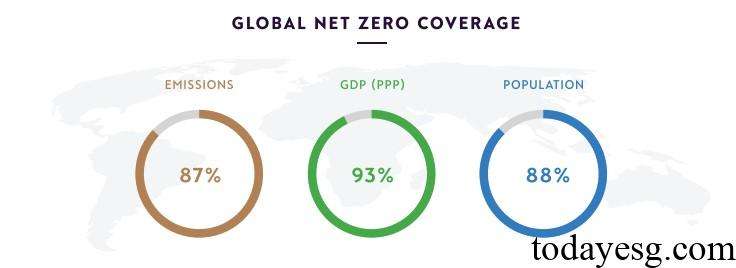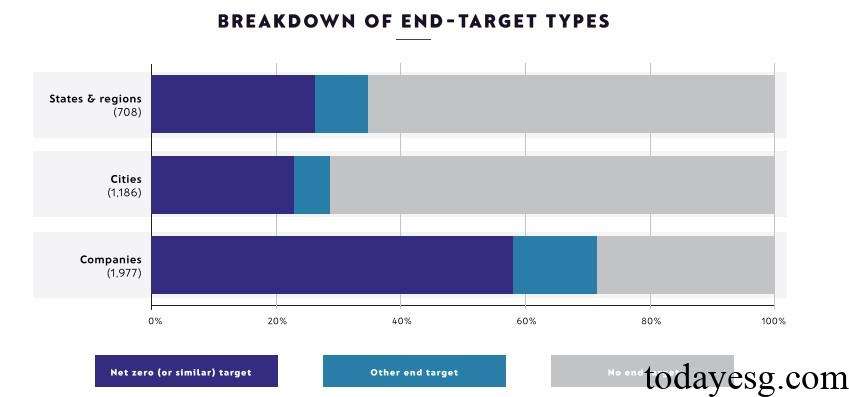2024 Global Net Zero Stocktake
Net Zero Tracker releases 2024 Net Zero Stocktake, aimed at analyzing global net zero goals and net zero emissions progress.
The core of Global Net Zero Stocktake is to track the development of net zero emission targets worldwide, with a focus on the credibility of net zero commitments for high emitters. As the fourth annual analysis released by Net Zero Tracker, this Stocktake focuses on the net zero situation of 1186 cities and 1977 listed companies in 198 countries and 708 regions worldwide.
Related Post: MSCI Releases Global Net Zero Tracker Report
Global Net Zero Development
Global net zero development can be divided into three phases, namely:
- Phase 1 (2008-2018): Net zero gradually became the goal of international climate policies.
- Phase 2 (2018-2022): In 2018, the Intergovernmental Panel on Climate Change (IPCC) released its landmark Special Report on Global Warming of 1.5 ° C, leading to a rapid increase in global net zero commitments. In 2018, the global net zero target accounted for less than 20% of GDP, but in 2021, this proportion has increased to over 90%.
- Phase 3 (2022 to present): After setting the net zero target, this stage mainly focuses on the development and implementation of the net zero plan. The 2022 United Nations Climate Summit released Integrity Matters: Net Zero Commitments by Businesses, Financial Institutions, Cities and Regions, clarify the details of net zero emissions for different entities. In 2024, the International Organization for Standardization (ISO) announced the development of a comprehensive net zero standard to assist in net zero practice. By 2025, countries will submit Nationally Determined Contributions (NDCs) in accordance with the Paris Agreement, providing credible plans for subsequent net zero development.
In the past three years, Net Zero Tracker finds that achieving the global goal of net zero emissions by 2050 is feasible. The growth rate of global carbon emissions in the past decade has been the slowest since 1920, with developed economies’ carbon emissions dropping to the lowest level since 1973. The global investment in clean energy technologies is expected to reach $2 trillion for the first time in 2024, and the development of carbon reduction technologies can replace the application of some carbon credits, carbon capture and storage technologies.
2024 Global Net Zero Stocktake Findings
Net Zero Tracker tracks and compiles net zero targets and carbon emissions data from nearly 4100 entities based on net zero emission commitments made by different countries, regions, cities, and listed companies. The net zero progress is as follows:
Countries: The net zero targets set by each country account for 87% of global greenhouse gas emissions, 93% of global GDP, and 88% of the global population. The first global Stocktake under the 2023 Paris Agreement urges parties that have not yet set a net zero target to develop long-term low-temperature greenhouse gas emission development strategies, and invites all parties to release revised strategies before the COP29 meeting.

Regions and cities: The net zero target set by each region covers a cumulative population of 2.3 billion, of which 793 million are net zero cities. Out of 271 net zero cities, 178 are located in high-income countries defined by the World Bank. The proportion of net zero target cities in high-income countries is 53%, higher than that in low- and middle-income countries (11%).
Listed companies: Nearly 60% of 1977 listed companies have set a net zero target, covering a total revenue of $13.8 trillion in 2020 to $31 trillion in 2024. The number of companies without carbon emission targets has decreased from 734 last year to 495. Listed companies headquartered in Asia have the highest net zero targets, as the decarbonization trend in the region is rapidly growing. The proportion of listed companies setting net zero targets is higher than that of countries, regions, and cities, possibly due to the lack of mandatory net zero target requirements in the latter.

Reference:







